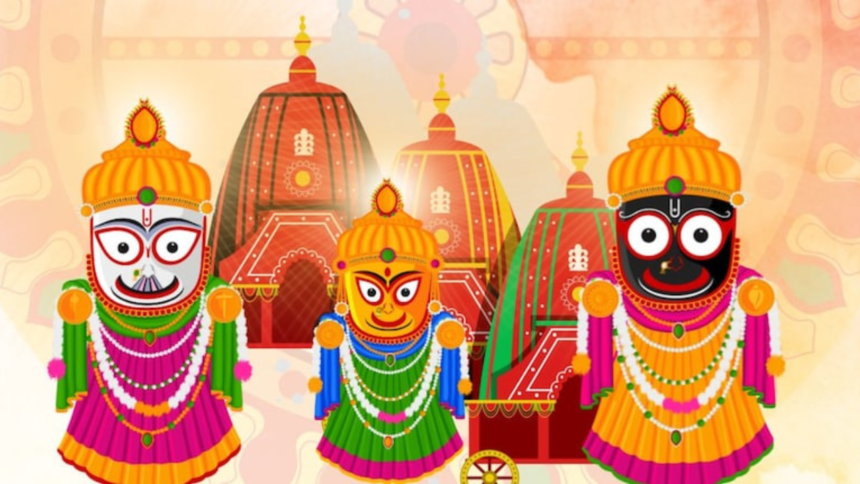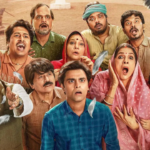Every year, the city of Puri in Odisha, India, transforms into a vibrant hub of devotion and festivity during the Rath Yatra, also known as the Chariot Festival. This grand Hindu festival, centered around Lord Jagannath, an incarnation of Lord Vishnu or Krishna, along with his siblings Lord Balabhadra and Goddess Subhadra, is one of the most significant religious events in India. Celebrated primarily in Puri but also across other parts of India and the world, Rath Yatra is a profound expression of faith, unity, and cultural heritage. In 2025, the festival took place around July 7-8, drawing millions of devotees to witness the majestic procession of divine chariots.
Origins and Mythological Significance
The Rath Yatra has its roots in ancient Hindu traditions and scriptures. The festival commemorates Lord Jagannath’s annual journey from his main temple, the Jagannath Temple in Puri, to the Gundicha Temple, believed to be the residence of his aunt. This journey is symbolic of the deity’s desire to step out of his sanctum to bless devotees and connect with the masses. According to legend, the festival is tied to stories of Lord Krishna, with some narratives suggesting it represents his return to Vrindavan or Subhadra’s wish to visit her parents’ home.
The Skanda Purana and other texts mention the festival’s origins, emphasizing its spiritual importance. Participating in the Rath Yatra is believed to cleanse sins, grant spiritual merit, and pave the way for moksha (liberation from the cycle of birth and death). The act of pulling the chariots is considered highly auspicious, as it symbolizes surrendering to the divine will and serving the deities.
The Grand Procession
The highlight of Rath Yatra is the grand procession of the three deities—Lord Jagannath, Lord Balabhadra, and Goddess Subhadra—each placed on massive, intricately decorated chariots. These chariots, known as Nandighosa (for Jagannath), Taladhwaja (for Balabhadra), and Darpadalana (for Subhadra), are architectural marvels, rebuilt annually with specific types of wood and adorned with vibrant fabrics, paintings, and motifs. Nandighosa, for instance, stands at 45 feet tall with 16 wheels, symbolizing grandeur and divinity.
The procession begins with the ceremonial “Pahandi,” where the deities are brought out of the temple in a rhythmic procession to their respective chariots. Thousands of devotees gather to pull the chariots along the Bada Danda (Grand Road) to the Gundicha Temple, a distance of about 3 kilometers. The sight of the chariots moving through the streets, accompanied by chants of “Jai Jagannath” and the sound of drums, cymbals, and conch shells, creates an atmosphere charged with devotion and joy.
Spiritual and Social Significance
Rath Yatra stands out for its universal accessibility. Unlike many Hindu rituals confined to temple premises, this festival brings the deities to the public, allowing people from all walks of life—irrespective of caste, creed, or religion—to participate and seek blessings. This inclusivity reflects Lord Jagannath’s philosophy of equality and compassion, making the festival a powerful symbol of unity.
Spiritually, the festival is a reminder of the divine’s omnipresence and accessibility. Devotees believe that even a glimpse of Lord Jagannath during the procession can purify the soul. The act of pulling the chariots is seen as a metaphor for pulling one’s life toward righteousness and devotion. For many, the festival is a time of renewal, where they reaffirm their faith and seek divine guidance.
Socially, Rath Yatra fosters a sense of community. The collective effort of pulling the chariots, singing bhajans (devotional songs), and preparing offerings strengthens bonds among devotees. The festival also boosts local economies, as artisans, priests, and vendors play vital roles in the preparations, from building chariots to selling prasad (sacred food offerings).
Cultural Impact and Global Reach
Beyond its religious significance, Rath Yatra is a celebration of Odisha’s rich cultural heritage. The festival showcases traditional art, music, and dance, with artisans crafting the chariots and performers enacting stories from Hindu mythology. The event also attracts global attention, with international devotees, particularly from the International Society for Krishna Consciousness (ISKCON), organizing Rath Yatra festivals in cities like London, New York, and Sydney.
The festival’s global reach underscores its universal appeal. It serves as a bridge between cultures, bringing together diverse communities under the banner of devotion. In Puri, the Rath Yatra is followed by rituals like the “Bahuda Yatra” (return journey) and “Suna Besha” (golden attire ceremony), further enriching its cultural tapestry.
Challenges and Modern Adaptations
Organizing an event of this scale comes with challenges, including crowd management and safety concerns. In 2025, authorities in Puri implemented measures like enhanced security and traffic control to ensure a smooth experience for the millions of attendees, as noted in posts on X. The festival has also adapted to modern times, with live telecasts and online streaming allowing devotees worldwide to participate virtually.
Conclusion
The Rath Yatra is more than a religious festival; it is a celebration of faith, unity, and cultural pride. It embodies the essence of devotion, bringing together millions in a shared expression of love for Lord Jagannath. As the chariots roll through the streets of Puri, they carry not just the deities but also the hopes, prayers, and aspirations of countless devotees. In a world often divided, Rath Yatra stands as a testament to the power of faith to unite and inspire.




